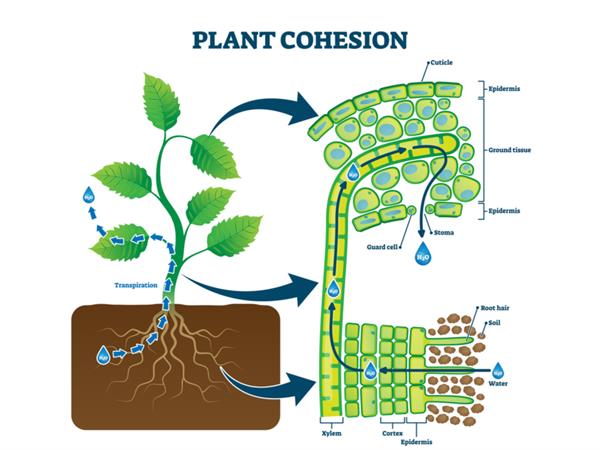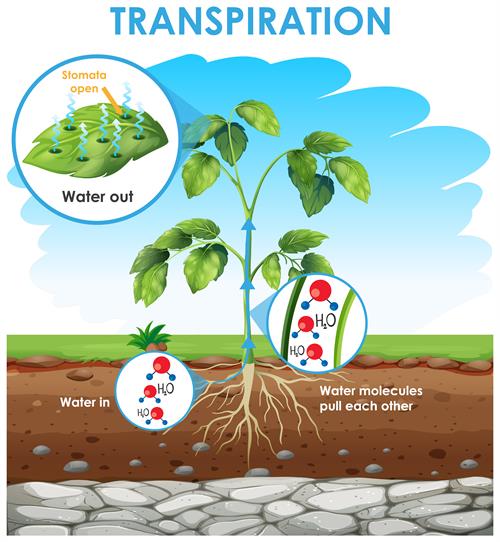
PUMPA - SMART LEARNING
எங்கள் ஆசிரியர்களுடன் 1-ஆன்-1 ஆலோசனை நேரத்தைப் பெறுங்கள். டாப்பர் ஆவதற்கு நாங்கள் பயிற்சி அளிப்போம்
Book Free DemoTransportaion of water by root pressure:
- The xylem tissue of the roots, stem and leaves comprises vessels and tracheids, as discussed previously. These are interconnected to form a continuous system of water-conducting channels that reach out to all the plant's parts.
- The root cells that are in contact with the soil actively take up ions from it, creating a concentration gradient between the roots and the soil.
- To eliminate this gradient, the water present in the soil moves into the roots, thereby showing a steady water movement into the root xylem, creating a column of water that is steadily pushed upwards (due to the cohesive force).

Plant cohesion vector illustration. Labeled water upward motion explanation with educational scheme. Biological structure diagram with xylem, cortex, epidermis and ground tissue cross section view.
But this pressure is only applicable for smaller distances as it is not enough to move water over the heights.
Transpirational pull:
It is the mechanism which is involved in the transportation of water to the highest points of the plant.
- Transpirational pull is the force that assists in bringing water upward from the roots to the leaves.
- Transpiration pull is also known as suction force, and it is used to draw water from the roots to the leaves in an upward direction.
The amount of water received by the leaves is used for photosynthesis, and the excess water is released into the atmosphere as vapours through stomata, which are small openings in the leaves.
This loss of water of water from the plants is known as transpiration. (It will be explained in detail in the upcoming discussions).

The illustration of Transpirational pull
The phenomena of transpirational pull:
- As discussed above the water molecules create a column in the xylem.
- The pressure exerted by transpiration acts as a force on the joined water molecules, assisting them in their upward movement toward the mesophyll.
- The mechanism involved in this process is based on the upward movement of water from the tip of the root to the aerial parts of the plant body. This is known as ascent of sap.
- A negative hydrostatic pressure is created in the mesophyll cells during transpiration, which draws water from the roots to the veins of the leaves.
Significance of transpirational pull:
The evaporation or excretion of water from the surface of cells in the leaves causes transpiration pull in plants. At night, the effect of root pressure on water transport is particularly significant. The transpiration pull becomes the predominant driving force in the transport of water in the xylem during the day when the stomata are open.
Thus transpirational pull helps is gaining back the water that is lost through the process of transpiration.
Reference:
https://www.freepik.com/free-vector/diagram-showing-transpiration-plant_6078279.htm#page=1&query=plant%20transpiration&position=1